
31 minute read
LES PARTICIPATIONS EN CONCOURS
Il y a quelques années en Europe des évènements de grandes qualités ont été organisés avec succès au cours desquels de splendides spécimens de chevaux égypt- les concours de modèles pratiqués en Europe et parfois ailleurs leur semble refléter des méthodes de sélections moins traditionnelles sortant du cadre du pays du berceau de race originel. iens notamment à Baden Baden (Allemagne) avec la présence particulière des meilleurs spécimens du Haras de Marbach, une Conférence animée par Judith Forbis et William Richardot de Choisey qui maintes fois ont été en Egypte, ce rendez-vous est resté dans l’histoire au fait de la proximité du sujet traduit clairement sur les principes séculaires de l’Egypte, conversations en direction des très nombreux amateurs et visiteurs présents dans une intense communion à la gloire du cheval égyptien, une opération du même type s’est déroulée à Sham’s El Asil Stud chez Madame Wigdane El Barbary connue mondialement pour ses immenses connaissances nous étant transmises et corroborées par les Dr Marsafi et Zaghloul (EAO) toujours présents dans ces rencontres.
Le rendez-vous spécifique qu’était l’Asil Cup très ancien dans sa programmation est un cas qu’il ne faut pas oublier, la diversité des présentations, d’épreuves montées et des colloques aux sujets très pointus s’adressaient aux meilleurs spécialistes mondiaux proches du cheval égyptien et de tout ce qui l’entoure.
Advertisement
Ces immenses personnalités qui ont marqué la grande et la petite histoire liée aux chevaux arabes égyptiens ont toujours souhaiter vivement protéger la race pour les années futures, depuis deux décennies
Plus près de nous, dans la dessein de multiplier des concours spécifiques de race cela reste confidentiel dans plusieurs pays Européens, la création du Championnat du Monde du Cheval Arabe Egyptien dont l’idée revient à d’autres, la première édition programmée en Italie sur un Champ de courses a connu un début assez modeste en participation, repris en main par Madame Moralli elle a su donné une autre dimension à cet évènement méritant une réelle estime, il est regrettable que ce concours soit annulé en 2023 dû à des susceptibilités de personnes, cependant à la réflexion unanimement partagée, surtout dans le contexte actuel le cheval arabe égyptien à une plus grande légitimité a être présenté lors d’évènements ou concours au sein de pays des berceaux d’origines.

Adressons avec insistance nos plus vifs remerciements à Madame Joanna Jonientz qui réveille en nous la passion du plus beau cheval arabe originel en nous offrant au travers de ces clichés, une part de rêve.
Contacts : jonientz@web.de harasdecernay@free.fr
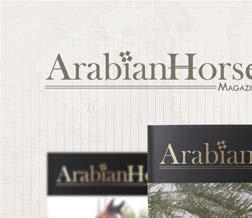



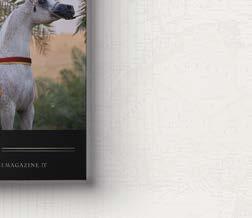






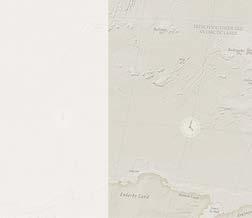

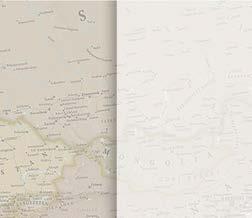
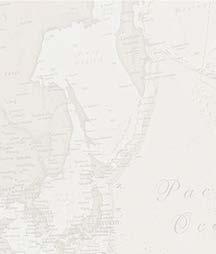


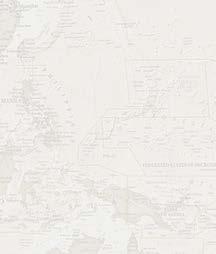




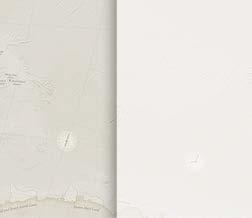
Text William Richardot de Choisey
Translation by Sonja Smaldone Pics courtesy from Gabriele Boiselle Editions
In addition to being a wonderful friend and a visceral lover of horses in general with whom we have both shared intense moments, Gabriele Boiselle, a great specialist, shares her professional experience during photography courses throughout the world, publishing reference works that get rapidly sold out in bookstores at each publication. The simple and more fair thing is to let Gabriele Boiselle express her vision mainly regarding purebred Arabian horses, in which she has demonstrated unwavering interest for more than thirty years. Below is a beautiful selection of her writing:
“La noblesse et la beauté des chevaux arabes ainsi que leur grâce et leur élégance sont vraiment hors pairs et ne laissent personne indi érent.
Depuis des siècles ils fascinent les hommes, aucune race de chevaux n’est aussi appréciée de nos jours et n’est aussi répandue à travers le monde que les pursang arabes et aucune autre race n’a autant marqué l’histoire.

Son origine est entourée de nombreux mythes et ses qualités exceptionnelles sont exaltées dans beaucoup de légendes, il s’agit d’êtres tout à fait particuliers, leur présence nous donne l’impression de rapprocher l’homme et l’animal par le cœur, ils nous ensorcellent par leur charme et sont capables de toucher au plus profond de notre ame avec leurs grands yeux”.
“The beauty and noble appearance of Arabian hor- ses as well as their grace and elegance are unique and we all feel moved by them. For many centuries humans have been fascinated by these horses, today there is no other breed which is to popular and widespread across the world as the pure bred Arabian and no other horse breed has had such an impact on history. There are countless myths concerning their origin as well as their unusual abilities many of which are also exalted in legends, they are very special beings, in their presence we feel the mutual bond and common heart of the animal and human being, the captive us with their magic and their big eyes are able to penetrate deep into our souls”.
Gabriele Boiselle www.info@editionboiselle.de
Malaka ‘s family was outstanding not only for producing Nazeera, but her sisters also left a crucial genetic legacy. Among Nazeer’s rst o spring was Samia (05.01.1952Dec.1968) (Nazeer x Malaka). During her time at El Zahraa, she produced seven foals before she died aged 16, in December 1968, and was bred to stallions El Sareei, Mashhour (01.10.1941) (Shahloul x Bint Rustem), Anter, and Amrulla (Ziada). Samia’s rst daughter, Bint Samiha (20.03.1957) by El Sareei, was sold to the Police College in Cairo at ve years old, while the other sisters were sold to the US. Samia gave her most substantial genetic contribution through three daughters: the chestnut Noha (29.08.1958-26.09.1978) by Mashhour, the chestnut Hekmat (13.02.1961-11.09.1990) by Anter and the grey Serenity Sagda (Sagda) (30.08.1966) by Anter. After producing three llies in Egypt, Noha (29.08.195826.09.1978) was purchased by Mrs Eloise B. and Mr James M. Kline, of Whittier, California, and exported to the USA. Among Noha’s daughters born in Egypt, only the rst, Set Abouhom (25.11.1962) (Alaa El Din x Noha) produced in the country of the pyramids. There is nothing left of produced thirteen foals, seven her and the other Samia’ successors as they were all exported to various countries, such as the US, Germany, Holland and Canada, where they built their prominent families. In 1965, Hekmat (13.02.1961-11.09.1990) was acquired by Mr Douglas B. and Mrs Margaret Marshall of Gleannloch Farms, Spring (Houston), Texas. Among the daughters of Samia by Anter, Hekmat was the one who displayed more features than the Kuhaylat Rodan chestnut ancestors of the female line. In the US, Hekmat became a star in the show rings and was a Class-A Champion in Halter many times. As well as being the founder of a prestigious family full of champions and excellent conveyors from a genetic standpoint. Hekmat produced thirteen foals, seven males and six mares in her life. Among the mares, I think the best was the chestnut Il Durra (1967) by Morafic, the grey Hamamaa (1970) by Ibn Antar (10.09.1964) (Anter x Bint Mona), bred by Gleannloch Farms. And the grey Royal Gemm (04.02.1976) by Mohssen, bred by Mr George R. Wright, of Ogden, Utah.
Among the mares, I think the best was the chestnut Il family, while Royal Gemm
Il Durra was the one who left the most numerous family, while Royal Gemm left valuable subjects, despite having fewer descendants. Among these, some daughters produced stupendous stallions. As I mentioned earlier, Hamamaa (1970), got exported to Australia, but in her career, she gave birth to eight foals between males and females who were all born or returned to the US.
Today, Hamamaa is perhaps the best-known mare, being the dam of the stallion Hansan (1974) by El Hilal (06.01.1966) (Ansata Ibn Halima x Bint Ne sa), bred by Mr George R. Wright. Hamamaa got exported to Australia from 1976 to 1983 and re-imported to America by Mr Ron and Mrs Joyce Palelek, of Vantage Point Farm, Vantage, Washington. This double Anter’ s granddaughter was also very appreciated and wellknown for being the dam of Bint Hamamaa (1976) by Ansata Ibn Sudan (01.07.196509.03.1987) chased by Mrs Joanne and Mr Robert J. Thorndike, of Jamal Arabians, Oroville, Washington, where Nabiel (16.02. 1971-
(Ansata Ibn Halima x Ansata Bint Mabrouka), bred by Mistletoe Investments Ltd., Wyong Creek, NSW, Australia. Bint Hamamaa (1976) got purchased by Mrs Joanne and Mr Robert J. Thorndike, of Jamal Arabians, Oroville, Washington, where she produced beautiful foals. Among them, there was the mare Bint Hamamaa (09.09.1985) by Nabiel (16.02. 197101.01.1995) (Sakr x Magidaa).
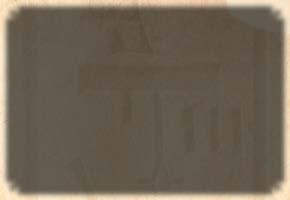
Bint Hamamaa (09.09.1985) got purchased by Dr Felino and Mrs Dolores Cruz, of Rancho Bulakenyo, Los Osos, California and resold when she was in foal to El Halimaar (02.12.1980-15.07.2002) of Rancho Bulakenyo, Los Osos, California and resold when she was in foal to El Halimaar (02.12.1980-15.07.2002)

Halima
(Ansata Ibn Halima x RDM Maar Hala), to Mr Lloyd and Mrs Darla Bryant, of Bryant Arabians, Grass Valley, California. In 2000, the couple sold Bint Hamamaa to Mr Hassanain Al-Nakeeb, of Al-Nakeeb Arabians, Westley Waterless, Newmarket, United Kingdom. She was one of the most beautiful mares sired by Nabiel. At Bryant Arabians, Bint Hamamaa was always bred to the stallion El Hadiyyah (1982) (Ansata Ibn Halima x Ansata Jellabia), leaving remarkable progeny. Among others, Bint Hamamaa was famous for being the dam of the stallion and excellent sire, El Habiel (1993Nov.2021) by El Hadiyyah, acquired by Mr Omar Sakr, of Sakr Arabians, Cairo, Egypt, 1994. Mr Omar would later change the horse’s name to Shaheen. At the rst delivery, Bint Hamamaa had a beautiful grey lly by El Halimaar, BA Halamet, born on 29 January 1990. Even if she was born at Bryant Arabians, the breeder was Rancho Bulakenyo. BA Halamet was a unique and precious specimen because this crossing would never repeat. This stupendous grey mare was acquired by Mr Emil and Mrs Debra Nowak of Abraxas Arabians, Temecula, California, where she was bred twice to ET Crown Prince (1977-2001)


Similarly, Abraxas Habiella (1996) and Abraxas Halamaa (27.08.1994) got sold to Mr Andy and Mrs Helen Hardwick of Al Sahrae Arabians, Bolinda, Victoria, Australia.
So, only Abraxas Bint Abu (17.03.200301.07.2022)
(Abraxas Abu Hilal x Abraxas Halamaa) remained in the US as members of this family.
Abraxas Bint Abu was a lovely Kuhaylah Rodania double Hekmat (13.12.196111.09.1990) since her sire Abraxas Abu Hilal (1999) (ET Crown Prince x AH Abraxas) was also a handsome bay grandson of Royal Gemm (04.02.1976) from the maternal line. Bred by Abraxas Arabians, Abraxas Bint Abu (17.03.2003-01.07.2022) got purchased by Mr Keri L. and Mrs Carolee C. Wright, of Cariswood Arabians, Sandy, Utah, where she lived until her death, leaving them an invaluable progeny.
Carolee C. Wright, of Cariswood Arabians, Sandy, Utah, where she lived until her death, leaving them an invaluable progeny.
In 1968, Serenity Sagda (Sagda) (30.08.1966) mares: that BA Halamet (29.01.1990)
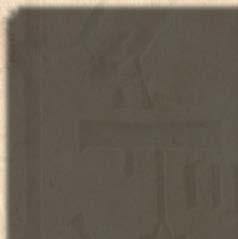
(The Egyptian Prince x RDM Maar Hala). The result was two super mares: Abraxas Halamaa (27.08.1994) and Abraxas Habielaa (1996). These were the only daughters that BA Halamet (29.01.1990) produced in the US, for she got sold to Mrs Louise Cordina and Mr Glenn North of Saba Arabians, Galston, NSW, Australia.
(Anter x Samia) got purchased by Mr Bill Heck and Mrs Hanna Louise (Hansi) Melnyk, of Serenity Arabian Farms, Queensville, Ontario and exported to Canada. Among Anter s’daughters, the grey Serenity Sagda was the one who most resembled her mother’s physical appearance and was also appreciated in the shows. She was the 1971 Supreme Champion in Galt, Canada and the 1971
(Hansi) Melnyk, of Serenity Arabian Farms, Serenity Sagda was the one who most resembled her mother’s phys-

Grand Champion in Markham, Canada. Serenity Sagda was an excellent mare for Serenity Arabian Farms and Imperial Egyptian Stud. Among her sons, I would like to refer to the stallion Imperial Sagdor (1977) by Serenity Osiris (1972) (Khofo x Serenity Bint Nadia), who sold to Fazendas Reunidas, Brazil, became National Grand Champion in 1980 and 1981.
Nazeer’s second daughter by Malaka and full sister to Nazeera was Mamlouka (28.02.19531967), another beautiful grey and proli c reproducer at El Zahraa Stud, Cairo, Egypt. No male foal was born out of Mamlouka in all her breeding career, but the ve mares she delivered were crucial to the genetics they spread all over the globe. Among these ve daughters of Mamlouka, the bay Set El Wadi (07.03.1962) by El Sareei and the chestnut Fi (21.09.1963) by Anter were part of the collection of mares of El Zahraa Stud, while the other three, all grey, got exported. Even the two remaining in Egypt produced subjects of extraordinary quality which moved to many countries. Among Mamlouka’s granddaughters born at El Zahraa Stud, I would like to touch upon the chestnut Farha (21.03.1970) (Galal x Fi ), a double Nazeer because also Galal (21.08.1959) was an essential son of this stallion and the mare Farasha (20.02.1951 -1967) (Sid Abouhom x Yosreia). At El Zahraa Stud, Farha produced ten foals. Among these, I shall also remark on the chestnut stallion Mekar (09.05.1975) by Mourad (23.12.1968) (Gassir x Mabrouka), purchased by Prince Abdullah el Mobarak of Egypt at the age of three. Some of Farha’s daughters also got exported to the US, like the two grey mares Negoom (28.05.1974) by Seef (26.08.1959)
(Mashhour x Elwya) and Bint Farha (16.11.1976) by Zahi (15.04.1970)
(Ibn Ha za x Bint Bukra), purchased in 1978 by Mr Donald R. and Mrs Jeanne Jacques Ford, of Lancer Arabians, when the stud had just moved to Reddick, Florida. Additional mares out of Fi (21.09.1963) were also produced in Europe. Toka (16.03.1979) (El Moutawakil x Tomadra), imported into Germany in 1980 by Mrs Ursula and Mr Willi Poth, when they still owned Dobel Arabians, in the Black Forest, before moving to Baudinard sur Verdon, France, in 1990. Even the chestnut Montaha
(26.02.1979) (Mohawed x Fi ), after she got exported to the US in 1981, was immediately bought by Mrs Ursula and Mr Willi Poth, where she also produced the beautiful UP Bint Montaha (22.05.1984) by Ibn Galal (Magdi) (25.10.1966) (Galal x Mohga), a chestnut mare with spectacular movement.

Fi (21.09.1963) also produced superlative stallions all of whom got exported: Farouk (27.03.1971) by Tuhotmos (14.10.1962-Jan.1991) (El Sareei x Moniet El Nefous). In 1972, Farouk was imported into Germany by Mr Wilhelm C. Hansen, Gestut El Sham, in Delingsdorf. Another stallion was Sidkii (Sedki) (01.09.1975) by Aseel (08.04.1967) (Sameh x Inas), imported in the US, in 1978, by Mr Donald R. and Mrs Jeanne Jacques Ford, of Lancer Arabians. Unfortunately, Sidkii spent little time at Lancer Arabians because in 1980 the farm closed down with the following well-known dispersal. This meant that in his breeding career, Sidkii only produced few Straight Egyptian progeny. Among these, it is worth mentioning the double Malaka, Bint Rudaynah (2000) out of Rudaynah (1981) (Zagloul x Bint Romanaa), owned by Mrs Karin Floyd, of Tucson, Arizona, who managed to preserve this bloodline by obtaining excellent
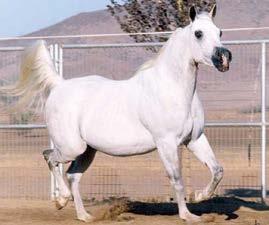
Pure Egyptian o spring. Three of Mamlouka’s daughters were exported: Bint Mam- additional foals in her new stud. Among these, there were a few stallions, all of excellent quality and several valuable, fertile mares, who left a conspicuous progeny. Among the stallions, I shall mention the racing champions Serenity Ibn Khofo (16.03.1977) by Khofo (Khopho) (02.03.196513.12.1991) (Mora c x Nabilahh), and Serenity Mamlouk (08.03.1979) by SF Ben Ibn Nazeer (1974) (SF Ibn Nazeer x Serenity Shahra). As well as the stunning Marbach stallion, Serenity Habib (21.03.1983) by Khofo. Among the exceptional daughters of Serenity Bint Mamlouka, I cannot avoid mentioning the Halter Multi-Champion Mare SF BtBt Mamlouka (1972) by Khofo, bred louka (02.04.1959) by Mashhour, Fawkia (28.02.1965) and Momtaza (29.03.1967) by Sameh. In 1970, Bint Mamlouka was purchased by Serenity Arabian Farms Queensville, Ontario, and exported to Canada. In Canada, she was known as Serenity Bint Mamlouka (02.04.1959). After being exported, she lived at Serenity Arabian Farms, rst in Canada later in Florida. Before being exported, Bint Mamlouka gave birth, in Egypt, to the bay Fooz (19.05.1969) by Hassan (17.01.1959) (Nazeer x Hemmat), who dwelled at the Police College in Cairo. Bint Mamlouka was a long-lived mare. She died when she was about 30 years old after delivering 14
10 at Serenity Arabian Farms and sold to Mrs Barbara A. and Mr Douglas W. Gri th, of Imperial Egyptian Stud, Parkton, Md.



SF BtBt Mamlouka’s rst daughter was Imperial Tiamo (1976-27.03.1983) by SF Ibn Nazeer (Lateef) (23.08.195312.09.1975) (Nazeer x Lateefa). Bred by Serenity Arabian Farms and owned by Imperial Egyptian Stud, Imperial Tiamo was previously registered under the name of Serenity Tiamo and became a 1980 U.S. National Top Ten Mare for Mr and Mrs Gri th, in the year in which Mr Douglas Warner Gri th died. This champion mare is remembered for being the dam of the chestnut Imperial Im Tarib (1982) (Ansata Imperial x Imperial

Tiamo), a stallion purchased, in 1986, by His Majesty King Hassan II of Morocco and taken to the Royal Stud Farm of Bouznika Stud Farm. About fty kilometres from Rabat, along the coast towards Casablanca, near the town of Bouznika. Imperial Im Tarib (1982) was an astonishing stallion that produced remarkable progeny. Undisputed best stallion of Maghreb, Imperial Im Tarib was named champion ten times and was: 1985 US Reserve Champion Western Pleasure, 1986 US Champion Western Pleasure, 1984 and 1985 Top Ten at the Egyptian Event US, 1986 Winner at the Grand Prix for Purebred Arabians in Paris, 1986 First in Class at the World Championship in Paris, 1987 Champion at the Cannes Championship and 1988 Winner at the Cannes Grand Prix. I should now open a parenthesis in this debate to talk about the birth of the Royal Stud Farm of Bouznika. The presence of Arabian horses in Morocco began in 666 AD. by General Uqba Ibn Na y, who left all the Arabian horses that were part of his army at his death. Since then, several incursions of armies with Arabian horses had been made. In the 11th century, the region of Maghreb got raided by the tribes of Najd, Banu Hilal and Banu Sulaim, riding Arabian steeds, sent by the Fatimid Caliphs of Cairo, who wished subjugate the Berber Kingdoms in revolt against their ruler. In the seventeenth century, Morocco was a great nation where horse breeding was highly developed, as evidenced by the historical Meknès Stables, built by the famed Sultan Moulay Ismail, a friend of King Louis XIV of France. These stables, of which the imposing ruins can still be seen today, could accommodate 12,000 horses, in- be found in the works of the famous French artist Eugène Delacroix, who visited the region of Maghreb in 1832. In the early 20th century, the placed a great deal of emphasis on Arabian horses breeding and nasty used to keep all Arabian horses in ing the ancestral tra- cluding Arabs, Berbers and Arab-Berbers. A good deal of reliable information about the Arabian horse population in Morocco during the rst half of the 19th century can be found in the works of the famous French artist Eugène Delacroix, who visited the region of Maghreb in 1832. In the early 20th century, the Moroccan authorities placed a great deal of emphasis on Arabian horses breeding and the Meknès State Stud became the primary breeding facility. The last monarchs of the Alawite dynasty used to keep all Arabian horses in their stables, following the ancestral tradition of prophet Muhammad’s favourite breed. Some were born in Morocco, while others came from Arabia or Egypt. So, in the 1960s, S.A.R. Prince Moulay Abdallah imported into his beautiful Ain-El Auda property, prominent stallions from Egypt. These were Burhan
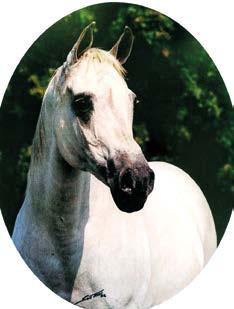


Some were born in Morocco, while others came from Arabia or Egypt. So, in the 1960s, S.A.R.
(22.02.1961) (Mora c x Mouna), imported in 1964, and Al Sad Al- Ali (El Sud El Aaly) (01.03.1957) (Nazeer x Lateefa). The latter was a gift received in 1960 by Egyptian President Nasser. From 1978 onwards, His Majesty King Hassan II gave the Arabian horse of Morocco all the prestige the animal deserved by acquiring renowned stallions. The King used to host them in his Farm of Douyet, near the city of Fez, until the construction of a new more suitable accommodation for the stallions and the mares of the royal breeding. The project started in May 1986, at the end of the World Arabian Horse Organization Conference, which had just been held in Marrakech, where the regional stud was. It ended in 1987 with the construction of Bouznika Stud Farm, where Mr Amid Abdelhamid was appointed Director. Back to our subject of debate, Fawkia (28.02.1965) (Sameh x Mamlouka), born in El Zahraa, got purchased in 1966 by Mr Douglas B. Marshall and Mrs Margaret Cullen to be brought to Gleannloch Farms park of mares in Spring (Houston), Texas. Fawkia was a gorgeous mare who became the 1968 US National Champion Mare. Like all Sameh’s daughters, she was easy to handle, always in good condition, with a solid build and well-merged anatomical parts. Moreover, her coat was of a radiant white, and like all of her paternal sisters, Fawkia had extraordinary movement and a magni cent trot. When she was in motion, her nostrils expanded with huge snorts, showing o the pride of typical Arabian horses. She trotted elegantly and powerfully. With the help of her hocks, Fawkia was able to push forward, while her tail curled at her back. It was heart-stopping to see her in those moments, with such brilliant movement. Once in Gleannloch Farms, Fawkia produced three important mares by Mora c (19.03.1956-18.03.1974) (Nazeer x Mabrouka). These were: Farahl (197221.08.1990), Najlah (03.05.1973) and Ana Gayah (04.05.1974). All three were beautiful and successful subjects in the show ring. They also left outstanding o spring, including Halter champions. In 1976, Fawkia was purchased by the Gri ths of Imperial Egyptian Stud, where she produced some male foals that were not used for breeding purposes. In those days, several exceptional male horses were mainly ridden under the saddle. One of those was Fawkia s youngest son, the chestnut Imperial Salaseef, by the stallion Moniet El Na s (31.07.1976) (Ibn Moniet el Nefous x Hoyeda), a at racing champion stallion, which in 1989 won the prestigious “Armand Hammer Classic” with an award of $ 50,000. At Imperial Egyptian Stud, Fawkia (28.02.1965) produced only two mares. One was the chestnut Imperial Nadrah (1982) by Moniet El Na s, which after a few deliveries was exported to Saudi Arabia. Fawkia’s last born mare was the grey Imperial BtFawkia (1983) by Moniet El Na s, a great sire of excellent reproducers and champions in Halter. Among Imperial BtFawkia’s daughters, there were Imperial Orianah (1987) by Orashan (28.04.1983-02.11.2010) (Messaoud x Ora), who in turn was the dam of Imperial Madori (02.05.1992-24.01.2011) by Imperial Madheen (25.05.1984) (Messaoud x Madinah). Imperial Madori was the rst stallion to be imported to Egypt in the early nineties by Mr Omar Sakr, of Sakr Arabians, Cairo. Imperial Madori was a super reproducer and sire of many champions. Among them, I shall mention the mare Gelgelah Albadeia (06.10.1995) (Imperial Madori x Anhar Albadeia), a multiple champion who became Campion Mare at the International of Wels, in Austria. As well as achieving the exhilarating victories of 2003 World Senior Champion Mare and European Champion Mare. Imperial BtFawkia’s precious daugh-
Imperial Falaah (1991-2010) by Imperial Imdal. The sweet and charming Imperial Falaah had inherited the strength and character of her grand-dam Fawkia and in her pedigree, she combined many of the prestigious Gleannloch Farms bloodlines. In particular, she carried two bloodlines of Malaka (17.02.1941) crossed with individuals by Moniet El Nefous (11.02 .1946-Dec.1976) (Shahloul x Wanisa), all imported by Mr and Mrs Marshall. Imperial Falaah had an interesting pedigree, with most of her ancestors representing the rst group of horses produced by Imperial Egyptian Stud. Horses of the foundation and the rst generation, when the stallions Amaal (19.01.1968-18.12.1987) (Morafic x Bint Maisa El Saghira) and Hossny (1966) (Ansata Ibn Halima x Sanaaa) were used at stud. Followed by Ansata Imperial (18.03.1976 -22.06.1990) (Ansata Ibn Sudan x Ansata Delilah) to be always remembered for producing Imperial Imdal. Additional Imperial foundation stallions were Moniet el Na s, bred by Bentwood Farms, who at birth was given the name AK Amin Bey. As a reproducer he sired the extraordinarily beautiful Imperial BtFawkia.
Moniet el Na s was a stallion with an adorable model, expressing great strength and re nement. He had a broad chest and perfect shoulders, his very correct legs showed spectacular movement, with an elegant tail carriage. Moniet el Na s was a subject of stunning presence, fully embodying the

20

Arabian type with a beautiful and classic head of a true desert horse. Two-time Champion Stallion at Scottsdale and a popular sire of Arabian racing horses in the late 1980s, Moniet El Na s got exported to Brazil in 1987. As a sire, he produced many Halter Show winners and numerous racehorses in the period when at racing with Arabian horses was gaining popularity. From this representation of Moniet El Nafis, we can infer the kind of precious genetic heritage Imperial BtFawkia (1983) was able to pass on to her daughter Imperial Falaah (1991-2010). In her breeding career, Imperial Falaah gave birth to four llies and ve colts who became stallions producing in di erent countries. Among these stallions, the most celebrated was the handsome chestnut Imperial Amir Kamar (2001) by Imperial Al Kamar (02.05.198713.10.2018) (El Hilal x Imperial Sonbesjul).
In 2010, this precious mare foaled her last exquisite lly, the grey Nadira Al Hadiyah by Ramses Mishaal Nadir (2006) (Mishaal HP x Ramses Minx). After producing Nadira Al Hadiyah, the lovely Imperial Falaah tragically died of cancer. All who loved her, will not forget this Princess for her supreme grace and her foals will keep her memory, passing her in uence onto future generations. Mamlouka ‘s last daughter in El Zahraa, and full sister of Fawkia was the grey Momtaza (29.03.1967), who in 1969 was purchased by Babolna State Stud and imported to Hungary. In Babolna, on 21 December 1972, Momtaza (29.03.1967) (Sameh x Mamlouka) foaled the chestnut lly 26 Ibn Galal, by the stallion Ibn Galal (Magdi) (25.10.1966) (Galal x Mohga). She was the only product of this mare in Hungary, due to infertility issues. 26 Ibn Galal was a Babolna broodmare until 1983, when she was purchased by Mr Heinrich Kretschmann of Assuad El Arab, Ludwigsburg, Germany and renamed Bint Magdi. In the 1970s, Arabian horses were rare in Europe and attracted people who barely knew horsemanship. Dr Hans-Jorg Tauschke, was one of those totally inexperienced. He was a doctor in Bad Hilbrunn in Bavaria in 1971, but later engaged in the breeding of these wonderful subjects. Dr Tauschke purchased Straight Egyptian mares, though these were hard to nd. On the other hand, going to Egypt was not possible at that time, due to African horse sickness restrictions. With the help of his friend Dr Hans Joachim Nagel, he managed to get in touch with Babolna State Stud. So, in 1977, Dr Tauschke bought two grey mares born in El Zahraa, which were problematic for them: El Tayeba (25.04.1965) (Fayek x Mahdia), imported to Hungary in 1971, and Momtaza (29.03.1967). In 1978, Dr Tauschke began a relationship with his wife Cornelia, highly expert in horse racing and breeding. She also transferred her knowledge to her husband. This marked the beginning of El Thayeba Arabian Stud in 1981, outside Grossenkneten, a village in the North of Germany, between Bremen and Osnabrueck. Unfortunately, the mare El Tayeba, who had given the name to the breeding program, never gave birth again, but the Tauschkes kept her on the farm as they loved the mare very much. For Momtaza instead, there was a new rebirth. In November 1978, Momtaza was in foal to the highly typey bay stallion Nizam (04.03.1973) (Shaarawi x Nazeema), and on 30 October 1979, the grey lly Morawa was born. Morawa (30.10.1979) (Nizam x Momtaza) became a foundation mare at El Thayeba Arabian Stud. She was an exceptional reproducer of classy mares, who perpetuated the excellent qualities of this female line to the next generations, females

He was a subject who generated substantial progeny in the US. Among Imperial Falaah ‘s daughters born in Imperial Egyptian Stud, I shall refer to the grey Imperial Koublah (2005) by Imperial Al Kamar, along with Imperial Orahllah (1995) and Imperial Orshalah (1998) by Orashan (28.04.198302.11.2010) (Messaoud x Ora). They all got exported to Arabian countries. When Imperial Egyptian Stud closed down in 2007, Mrs Barbara A. Gri th strove to leave her noble and beloved mare Imperial Falaah in good hands. So, in February, she sold her to Mrs Susan Gilbert, of Sumerlan Egyptian Arabians, in Magnolia (Houston), Texas.





El Thay Meseda (1989) (El Thay Ibn Halim Shah x Morawa), got sold to Mrs. Sabrina and Mr. Karsten Scherling, Al Tair Stud, Walsrode, Germany;
El Thay Bint Morawa (1993) (El Thay Mameluk x Morawa), got sold in Saudi Arabia; El Thay Misk (1987) (Ibn Nazeema x El Thay Mansoura), got sold to Mrs Sabrina and Mr Karsten Scherling, Al Tair Stud, Walsrode, Germany; and males alike. Many became outstanding stallions. Too sad that Dr Hans-Jorg Tauschke could not enjoy all the success of his purchase in Babolna in 1971. Unfortunately, in 1992, he su ered a heart attack and died in 1994 after a two-year coma. Below, I have listed a few names to indicate some of the most representative subjects, which come from Morawa ‘s bloodline:
El Thay Mansoura (24.12.1983) (Machmut x Morawa), stayed at El Thayeba Arabian Stud; El Thay Momtaza (1987) (Ibn Nazeema x Morawa), got exported to Israel;

El Thay Malakah (29.03.2005) (El Thay Mashour x El Thay Mahfouza), remained in El Thayeba Arabian Stud.

With these and other subjects, the in uence of Momtaza (29.03.1967) has been preserved over time. I hope their descendants will maintain the extraordinary qualities of Malaka and be worthy representatives of her outstanding family.


El Thay Mameluk (05.01.1988-2011) (Ibn Nazeema x El Thay Mansoura), got sold in 2007 to Mr Talal Abdullah Al Mehri, Al Aljazira Stud, Kuwait;
El Thay Mahfouza (18.04.1994) (El Thay Ibn Halim Shah x El Thay Mansoura), stayed at El Thayeba Arabian Stud;


1) Hekmat Feb.13.1961-Sept.11.1990(Anter x Samia). Bred by El Zahraa Stud, EAO, Cairo, Egypt. Imported to USA in 1965 by Gleannloch Farms, Spring (Houston), Texas. Sold in 1971 to Mr. George R. and Mrs Sharon Wright, Ogden, Utah. Multi-Champion in Class A Halter.

2) Il Durra 1967(Mora c x Hekmat). Bred by Mr. Douglas B. Marshall, Gleannloch Farms, Spring (Houston), Texas. Owned by Mr. Bill and Mrs Evelyn Larsen, Eldorado Arabians, Fort Smith, Arkansas.
3) Al Zog 1973(Samim x Il Durra). Bred and owned by Mr. Bill and Mrs Evelyn Larsen, Eldorado Arabians, Fort Smith, Arkansas. Competed successfully in Halter, Western Pleasure, English Pleasure, Native Costume and Side Saddle.
4) Royal Gemm Feb.4.1976(Mohssen x Hekmat by Anter). Bred by Mr. George R. Wright, Ogden, Utah.
5) Hamamaa 1970(Ibn Antar x Hekmat). Bred by Gleannloch Farms, Spring (Houston), Texas. Sold in 1971 to Mr. George R. and Mrs Sharon Wright, Ogden, Utah. Imported to Australia in 1973 by Mistletoe Investments, Ltd. Wyong Creek, NSW.
6) El Habiel (Shaheen) 1993-Nov.2021(El Hadiyyah x Bint Bint Hamamaa, by Nabiel). Photo made in 2005 by Nicole Sachs. Bred by Mr. Lloyd and Mrs Darla Bryant, Bryant Arabians, Grass Valley, California. Imported to Egypt in 1994 by Mr. Omar Sakr, Sakr Arabians, Cairo.
7) Abraxas Halamaa Aug.27.1994(ET Crown Prince x BA Halamet). Bred by Mr. Emil and Mrs Debra Nowak, Abraxas Arabians, Temecula, California. Owned by Mr. Andy and Mrs Helen Hardwick, Al Sahrae Arabians, Bolinda, Victoria, Australia.
8) Abraxas Bint Abu Mar.17.2003-July.1.2022(Abraxas Abu Hilal x Abraxas Halamaa). Bred by Mr. Emil and Mrs Debra Nowak, Abraxas Arabians, Temecula, California. Owned by Mr. Keri and Mrs Carolee Wright, Cariswood Arabians, Sandy, Utah.
9) Serenity Sagda (Sagda) Aug.30.1966(Anter x Samia). Bred by El Zahraa Stud, EAO, Cairo, Egypt. Imported to Canada in 1968 by Mr. Bill Heck and Mrs Hanna Louise (Hansi) Melnyk, Serenity Arabian Farms, Queensville, Ontario.
10) Mamlouka Feb.28.1953-1967(Nazeer x Malaka). Bred and owned by El Zahraa Stud, EAO, Cairo, Egypt.



11) Toka Mar.16.1979(El Moutawakil x Tomadra Dec.20.1973 by Tahsin x Fi ). Bred by El Zahraa Stud, EAO, Cairo, Egypt. Imported to Germany by Mrs Ursula and Mr. Willi Poth, Dobel Arabians, Dobel, Black Forest, Germany.
12) Sidkii (Sedki) Sept.1.1975(Aseel x Fi ). Bred by El Zahraa Stud, EAO, Cairo, Egypt. Imported to USA in 1978 by Mr. Donald R. and Mrs Jeanne Jacques Ford, Reddick, Florida.
13) Serenity Habib Mar.21.1983(Khofo X Serenity Bint Mamlouka). Bred by Mr. Bill Heck and Mrs Hanna Louise (Hansi) Melnyk, Serenity Arabian Farms, Hawthorne, Florida. Owned by Marbach State Stud, Germany.
14) SF BtBt Mamlouka 1972(Khofo x Serenity Bint Mamlouka). Bred by Serenity Arabian Farms, Queensville, Ontario, Canada. Owned by Mrs Barbara A. and Mr. Douglas W. Gri th, Imperial Egyptian Stud, Parkton, Maryland. Multi-Champion Halter Mare.
15) Imperial Tiamo (Serenity Tiamo) 1976-Mar.27.1983(Serenity Ibn Nazeer x Serenity BtBt Mamlouka). Bred by Serenity Arabian Farms,
Queensville, Ontario, Canada. Owned by Imperial Egyptian Stud, Parkton, Maryland.
16) Imperial Im Tarib 1982(Ansata Imperial x Imperial Tiamo). Bred by Imperial Egyptian Stud, Parkton, Maryland. Imported to Morocco in 1986 by His Majesty King Hassan II, Bouznika Stud Farm, in Bouznika. Muli-Champion.
17) A view of Bouznika Stud Farm, in Morocco. Near the City of Bouznika, located at about 50 Km. from Rabat, along the coast towards Casablanca.
18) Fawkia Feb.28.1965(Sameh x Mamlouka). Bred by El Zahraa Stud, EAO, Cairo, Egypt. Imported to USA in 1966 by Mr. Douglas B. and Mrs Margaret Cullen Marshall, Gleannloch Farms, Spring (Houston), Texas. 1968 US National Top Ten Mare.
19) Najlah May.3.1973(Mora c x Fawkia). Bred by Mr. Douglas B. and Mrs Margaret Marshall, Gleannloch Farms, Spring (Houston), Texas.
20) Ana Gayah May.4.1974 (Mora c x Fawkia). Bred and owned by Gleannloch Farms, Spring (Houston), Texas. Multiple Class A Champion mare.
21) Imperial Madori May.2.1992-Jan.24.2011(Imperial Madheen x Imperial Orianah 1987 by Orashan x Imperial BtFawkia). Bred by Mrs Barbara A. Gri th, Imperial Egyptian Stud. Sold to Mr. Omar Sakr, Sakr Arabians, Cairo, Egypt.
22) Imperial Falaah 1991-2010(Imperial Imdal x Imperial BtFawkia). Bred and owned by Mrs Barbara A. Gri th, Imperial Egyptian Stud, Parkton, Maryland. Last owner Mrs Susan Gilbert, Sumerlan Egyptian Arabians, Magnolia (Houston), Texas.
23) Imperial Amir Kamar 2001(Imperial Al Kamar x Imperial Falaah). Bred by Mrs Barbara A. Gri th, Imperial Egyptian Stud, Parkton, Maryland. Owned by Mrs Polly Shaefer and Dr. Joseph P. Chollak, Eastern Star Arabians, Harveys Lake, Pennsylvania. Sire of Champions in Hunter Pleasure, Halter and Liberty.
24) Nadira El Hadiyah 2010(Ramses Mishaal Nadir x Imperial Falaah). Bred and owned by Mrs Susan Gilbert, Sumerlan Egyptian Arabians, Magnolia (Houston), Texas.
25) Momtaza 29.3.1967(Sameh x Mamlouka). Bred by El Zahraa Stud, EAO, Cairo, Egypt. Imported to Hungary in 1969 by Babolna State Stud.
26) Bint Magdi (26 Ibn Galal) Dec.21.1972(Ibn Galal [Magdi] x Momtaza). Bred by Babolna State Stud, Hungary. Imported to Germany in 1983 by H. & M. Kretschmann, Assuad El Arab, Ludwigsburg.
27) El ay Mansoura Dec.24.1983(Machmut x Morawa). Bred by Dr. Hans-Jörg and Mrs Cornelia Tauschke, Gestüt El ayeba, Grossenkneten, Germany.
28) El ay Mameluk May.1.1988-2011(Ibn Nazeema x El ay Mansoura). Bred by Dr. Hans-Jörg and Mrs Cornelia Tauschke, Grossenkneten, Germany. Owned by Mrs Sabine von Elm, Germany. Sold in 2007 to Mr. Talal Abdullah Al Mehri, Aljazira Stud, Kuwait.
29) El ay Mahfouz, 2003(Ansata Selman x El ay Mahfouza e cultural heritage of the Arabian horse, its natural beauty and elegance combined with its sweet character as well as the art of breeding keep fascinating me. When I started –long before internet existed -, the available information about these exotic horses was rather small. Taking a plane for a visit to El Zahraa or a show in Qatar was still 15 years ahead and back then out of question. When I had to decide what to do for a living, following my passions – art, design, languages
Apr.18.1994(El ay Ibn Halim Shah x El ay Mansoura). Bred and owned by Mrs Cornelia Tauschke, El ayeba Stud, Grossenkneten, Germany.
30) El ay Malakah Mar.29.2005(El ay Mashour x El ay Mahfouza). Bred and owned by Mrs Cornelia Tauschke, El ayeba Stud, Grossenkneten, Germany.
Who is Nicole Sachs?
Let me start by mentioning that my interest in the Arabian horse and no less the people connected with it started 35 years ago. Horses in general and riding had been my interest before, however, it was the Arabian horse that made me visit German studs, then explore farms and events in the European countries and later in the Middle East and Egypt.
– didn’t seem an economically promising option, so I chose to study law, which led to my profession as a legal expert. Nevertheless, following that career didn’t keep me away from horses and art. ere was always an urge to somehow capture these fascinating animals, to conserve a bit of their beauty and take it home. I started with photography, enjoyed the quick results and now a 35year archive. Occasionally I also wrote some articles. A major move forward from 2000 on was visiting Cairo, Doha and Kuwait several times. Especially in Kuwait I had the pleasure to follow the phenomenal development of the state stud and private farms over the past two decades. What can be more interesting than following how the Arabian horse community changes over long terms and guess, where it will be going next? At all the farm visits and events, I sucked in so many impressions of Arabian horses that it had to come out sooner or later. Sculpting is just the right challenge, because you have to nd an answer to the question, which shapes and lines of an equine body give elegance, expression and harmony. It is de nitely not only dished head, huge eyes and a long tail. I try to look as closely at the horses as breeders do – a big challenge. I strive to sculpt not simply an (over)idealized horse, but some speci c characteristics, that in- dicate for example a typical Straight Egyptian of Dr. Nagel’s breeding program or an Om El Arab type horse. ings of beauty have always attracted me. Nature, art, fashion, design. I learned from studying books, visiting museums, looking closely at art works – learning from the few brilliant ones and being astonished in how many ways horses can be deformed by others. My favourite “look and learn”-sculptures are the numerous horse monuments in European cities mostly from 19th century, because they tell how well artists in those days knew horses. Table size bronzes from that period are what I admire as “classic horse bronzes”.
Could you please tell us about your formative years as an artist? Have you been trained or are you self-taught?
When and why did you begin sculpting Arabian horses?
I am driven by my private desire to have bronze sculptures as I like them primarily for my own joy and for sharing them with likeminded collectors by selling a limited number of casts.
Occasional attempts in earlier years le aside, it was 2017 when I took up sculpting seriously. I handed a nished model of an Arabian horse head to a foundry and feared that they would destroy the model in the process without producing a good cast in the end (I had su ered such experience before). Much to my surprise we worked together wonderfully and the result was all that I had hoped for. Ever since projects are getting more rened and complex: head with Arabic halter, standing horse, moving horse, mare and foal, rearing stallion, camel and baby camel, (soon) group of race horses.
Aside from sculpting, I love watercolour painting, too. Perfect for portraits of ea-bitten horses. Also chestnuts shine so beautifully in watercolours.
Is there a particular place that brings you inspiration?
It is certainly stud farm visits that are a key inspiration. e better and longer
I know a breeding program, the more exciting it gets. e famous straight Egyptian studs at Großenkneten and in Kuwait made lasting major impressions. Also the timeless breeding programs of El
Zahraa or the Royal stud in Bahrain or the polish state studs. Besides being a dedicated Egyptian horse lover (member of Pyramid Society Europe), I love the variety within the Arabian horse community (WAHO life time member).
What are the di erent stages of your production?
One im-

Some steps of the process
portant point about bronze sculptures is to realize that it is a very long process until each single piece nally is in your hands in all its shining nal glory. It does not only take a talented artist but also an excellent foundry, that is willing and able to go through hours and hours of handwork to transfer the artist’s model into almost everlasting metal. I am very happy to work with a German and a Dutch foundry.
To give a very rough idea: Sculpting the model takes vaguely 100 hours plus 40 hours work by the foundry. e foundry makes a silicon mould of the model. Out of that mould a wax model is produced, which I retouch in all details. Around this wax another form is built. e wax is then melted out, so that liquid bronze (melted in a 1200 degrees’ hot oven) can be poured in. Out comes an ugly piece of metal, that needs a lot of working over by the foundry master. A er sandblasting the raw bronze gets a complicated chemical treatment under heat, which is called patinating. Last step is polishing and waxing. is is why each bronze is a unique piece of cra manship. It takes months to produce a new cast. at’s why bronze sculptures are true luxury items.

Do you also make Trophies for show competitions?
I had the honour of creating 4 special awards for the Kuwait Arabian Horse Festival. Producing trophies in large numbers is not my aim. As I love ne detail work, my works are more predestined to come in small numbers only – for private collectors or special awards at shows. My sculptures are limited editions of 8 to 15 casts. If a col- lector likes a sculpture, I will start the production of an individual new cast for him. It takes more or less 6 months. Sometimes I have to let go the cast, that I kept at home, and wait myself for the new one.
What changes have you seen in your work since you started your label?

It is such a joy to learn more about anatomy details, about harmony from all sides and make more experiments aside from the classic portrait positions. I am challenging my foundries with more re nement in each new sculpture. Which bronze sculptures collections are you particularly fond of or proud e homepage features all my works in many pictures and information. Anyone who is interested is cordially invited to get into contact about the availability of the pieces. In addition, I share new projects, news and photographs on Facebook (Nicole Sachs) and Instagram (nicole. sachs. bronzen). It is very interesting to nd out, what appeals most to friends and followers.
I was very fond of the collection shown at the All Nations Cup at Aachen 2022. More than 20 bronzes representing all aspects of my work so far. And a dozen watercolour portraits.
My camels are also very dear to me. It took much study to understand their anatomy and expression. I like that there are only a few classic table bronzes of camels, at least to my knowledge.
What I like best is most expensive: sculpture groups with multiple horses in interaction.
What is the best advice you would give to your clients when they commission a work?
I take only very few commissions, because my time for art work is so limited. It is mostly horses that I know or knew well and whom I admire anyway. A portrait is an exciting challenge. I will only accept a commission, if I see clearly what its speci c traits are. A look at the pedigree may be very helpful. Can our readers view and purchase your sculptures online?
Being present in the social media is a very nice way of establishing new contacts all over the world. So I keep my homepage www.sachs-bronzen. de updated.
Nicole, where do you see yourself, say, ten years from now?
Well, I am in my mid- ies. Exquisite detail work needs good eyesight and exible steady hands. So I should use the next 10 years as best as possible to make a nice contribution to the broad range of international Arabian horse art. ere is no lack of ideas –be it sculpture or painting. So far I managed to create 5 sculptures each year (don’t really know how that worked). Let’s see, how many it will be until 2032.
Do you have any nal words for our readers and those who are eager to learn more about you?
I am very grateful for all the wonderful, most interesting people, whom I met, because we share the passion for horses and arts. Greetings to you, dear friends! And to future friends, too!








